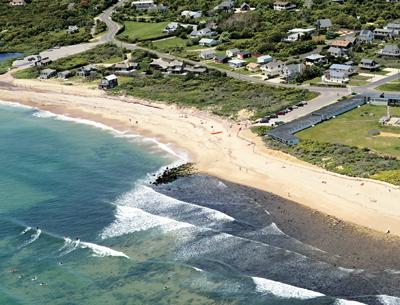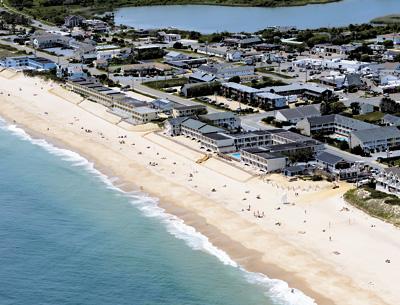In the Background
In the Background
There was Rose, black apron tied around her waist, blond hair pulled into a bun, pencil pushed behind her ear. I called out to her, “Rose! Hey!” and hugged her with inebriated familiarity.
I grew up with Rose. After we graduated high school, she stayed and became a waitress and I went away to a small, expensive liberal arts college and began to think less of the place I called home — a town with a blinking orange light at the lone intersection and more cows than people.
“How’ve you been?” I asked.
She flinched. A subtle jerk, but it was there. She told me she cut hair at a local salon during the day and that she lived with her boyfriend one town away. I made noncommittal, “Oh, how interesting” noises and arranged my face into an expression that I hoped masked what I was thinking: “Poor Rose. She didn’t escape. What a boring life. How sad and meaningless.”
“Well it was nice running into you,” she said as she edged away.
“You too! We should get a drink sometime!” I said brightly. Neither of us had exchanged phone numbers.
It wasn’t until I became a waitress my senior year in college that I began to understand why Rose flinched.
When I waited on my classmates, there was always a shimmer of unease, at least between myself and the ones who had trust funds and didn’t need to work, the ones who wore designer clothes, but tipped me in quarters.
They looked at me the way I had looked at Rose, as a person defined by the burgers she served.
As a waiter, you become part of the background of the customers’ dining experience. You are there to provide comfort and to handle any problems that arise. Other than that, you cease to matter.
There’s nothing innately wrong with that; it’s part of the job. But it’s easier to mistreat someone who’s not a person but a “waitress,” a “landscaper,” a “housecleaner.” It’s easier to look down on someone who doesn’t have the things you value, like wealth or higher education or invitations to trendy parties or being on a “50 Most Powerful People in the Hamptons” list.
This attitude influences the relationships between the residents and those who come here on vacation. It’s not that the “summer” people are unwelcome, but rather that it would be nice if the majority of them didn’t seemingly operate under the assumption that this place exists solely for their pleasure. Of course I’ve had many positive interactions waiting on people not from this area, but it’s the negative ones that linger in my mind.
One night, after I was yelled at by an irate customer because she disliked the consistency of her salad dressing, a woman at another table tried to comfort me by saying, “It’s okay dear, you won’t always be a waitress.”
Excuse me, what? Is there a problem with always being a waitress? What kind of judgment are you making about my profession? With one statement you’ve managed to capture the suck of dealing with well-fed jerks complaining about their dinner while at the same time belittling the person refilling your water glass.
Perhaps if the wealth gap didn’t continue to grow; perhaps if people didn’t build multimillion-dollar mansions on nearly every piece of available land, raising property prices to unaffordable levels for someone like me; perhaps if colleges didn’t up their tuition year after year; perhaps if the banks didn’t have sky-high interest rates. Perhaps, perhaps, perhaps, I wouldn’t always be a waitress.
Or maybe I would. Maybe this is what I like doing because the money is good and the work is satisfying. And maybe, if all of the above didn’t happen, I wouldn’t have some stranger implying that one day I’ll hang up my apron and do something meaningful with my life because people on the richer end of the spectrum wouldn’t be so out of touch with everyone else.
On the long list of things that I’m ashamed of, how I interacted with Rose that night all those years ago is close to the top.
She didn’t need my pity; she was better than that. Aside from her poise and my arrogance, the only difference between Rose and me is that I had many thousands of dollars in student loans I would be paying off for the next quarter-century.
I was an idiot.
I’m delighted to report that Rose is happily married with a daughter. She still works at the bar and now, when I go home to visit, we have a drink together.






